The Steam Deck and the Nintendo Switch (OLED) Model are two of the hottest handheld gaming devices right now. While the Switch OLED is an improvement over the existing Nintendo Switch, the Steam Deck is an entirely new product from Valve.
If you're in the market for a new handheld console, you can't go wrong with either of these options, but one of them may suit your needs better. Here, we'll pit Valve's new Steam Deck against Nintendo's OLED Switch so that you can make an informed decision.
What Is the Nintendo Switch (OLED) Model
The Nintendo Switch is a hybrid gaming console that can be used either in handheld mode for personal use or docked mode for home use. The latest model is an improvement over the previous Switch, and, as the name suggests, it features an OLED display.
What Is the Steam Deck?
At first glance, you'd think the Steam Deck is just a handheld console, but it's actually a portable PC. That means, when docked, its Linux-based SteamOS can replace your desktop computer. As a result, it can do pretty much anything you'd expect from a Linux machine.
1. Steam Deck vs. Nintendo Switch (OLED): Internal Hardware
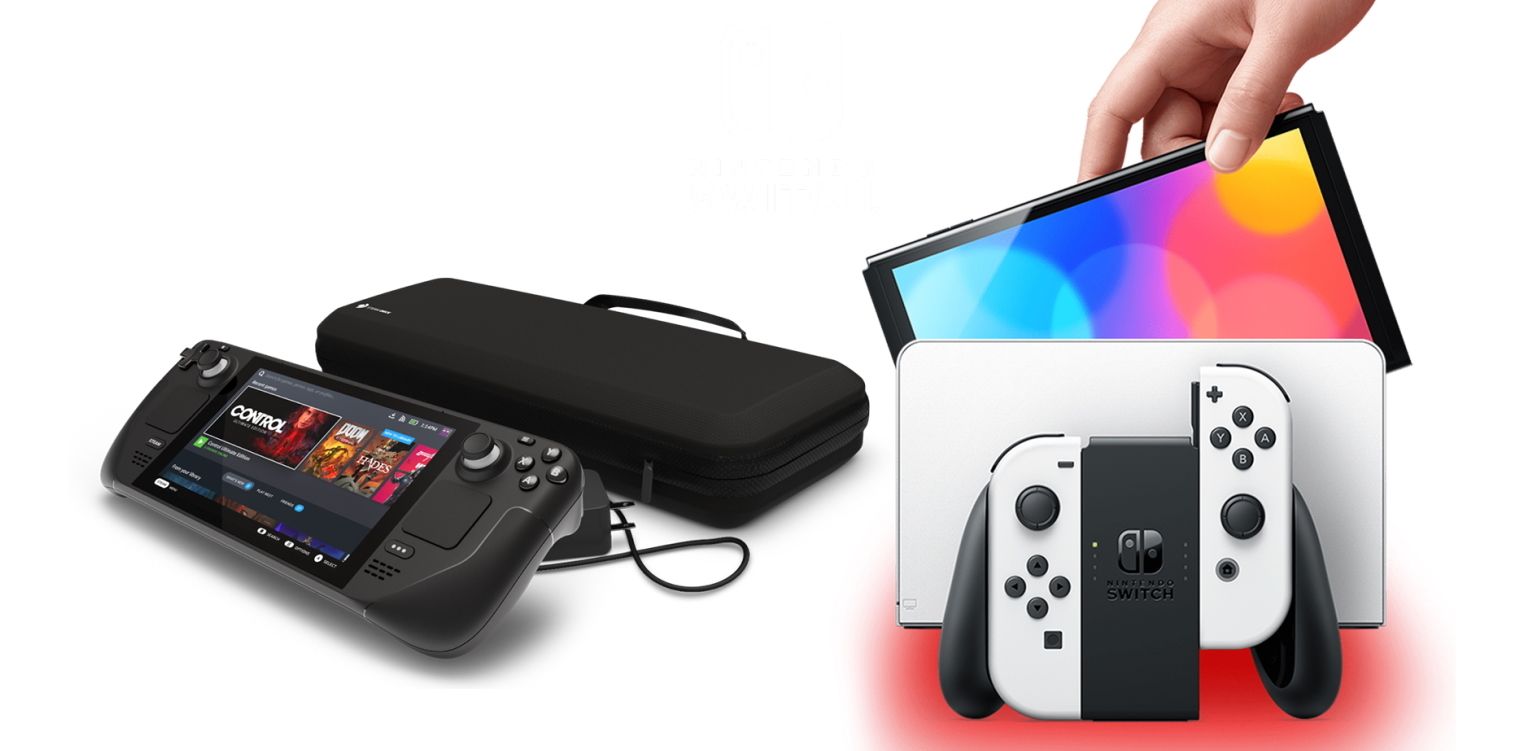
Let's start with the exciting stuff. Even though the Nintendo Switch (OLED) is new, most of the hardware inside is still over four years old. So nothing much has changed apart from the display. Moreover, it houses the same Nvidia Tegra X1 chip that powers the original Switch.
The Steam Deck, on the other hand, looks much more impressive on paper. That's because Valve uses a custom AMD APU for the unit, based on the latest AMD RDNA2 and Zen 2 architecture. The Steam Deck also packs 16 GB of LPDDR5 RAM to handle any PC game you throw at it.
As for the rest of the internal hardware, both handhelds feature a USB-C connection, built-in Wi-Fi, and Bluetooth, but only the Steam Deck supports wireless Bluetooth headphones out of the box.
Related: The Best Bluetooth Wireless Headphones
2. Steam Deck vs. Nintendo Switch (OLED): Display

The new Nintendo Switch takes the cake in this department. The display is now larger at 7 inches, and the vibrant OLED panel has an infinite contrast ratio. However, the screen resolution remains unchanged at 1280 × 720 (720p). To play games in 1080p, you'll need to use the included dock to connect the Switch to your TV.
For a brand-new device, we feel the Steam Deck falls short in the display department. It features an LCD screen with a resolution of 1280 × 800. The screen measures 7 inches diagonally, just like the Nintendo Switch, but since the Steam Deck has slightly more vertical space, you may find it harder to distinguish individual pixels.
Related: LCD vs. OLED: What Are the Differences?
3. Steam Deck vs. Nintendo Switch (OLED): Games
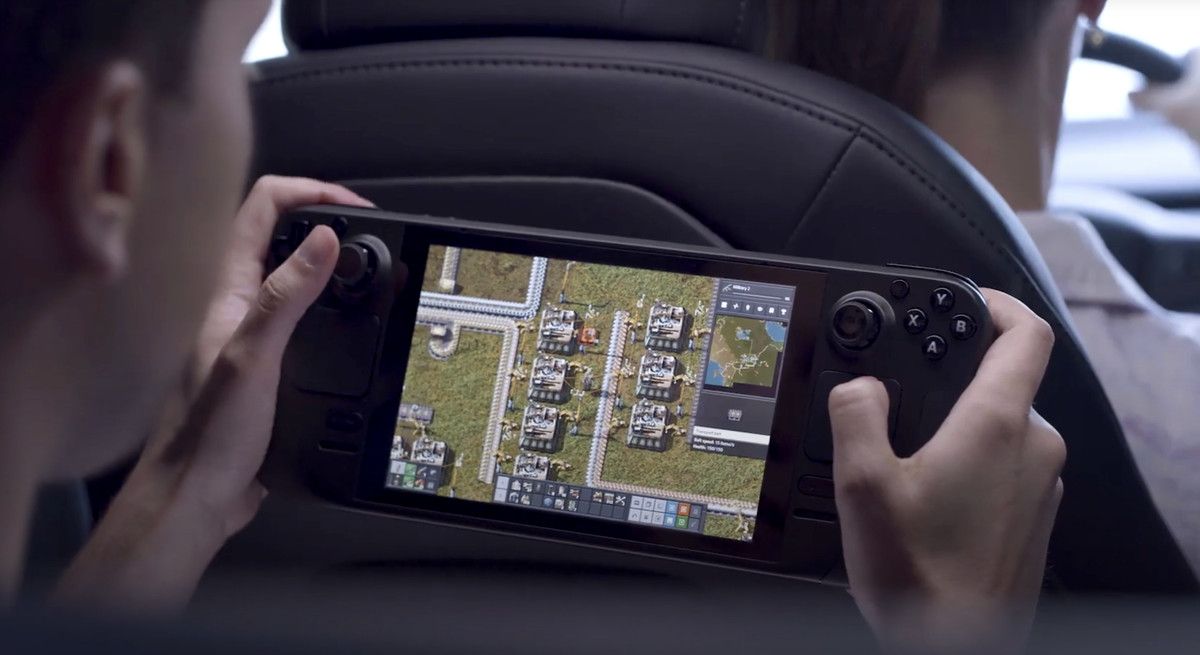
Because the Steam Deck is basically a handheld gaming PC, it has a much wider selection of games. Not only do you have access to thousands of games on the Steam store, but you can also install titles from third-party stores like Epic Games or EA Origin.
The Nintendo Switch (OLED) Model, on the other hand, has fewer games. While it may lose when it comes to numbers, the quality of first-party Nintendo Switch titles is unmatched. These games are also exclusive to the Switch.
In the end, this contest boils down to which games you want to play. Do you prefer classics like Super Mario Odyssey, The Legend of Zelda: Breath of the Wild, and Pokémon? Then, the Switch is a no-brainer. But, if you want a broader game library, you'll love the Steam Deck.
4. Steam Deck vs. Nintendo Switch (OLED): Versatility
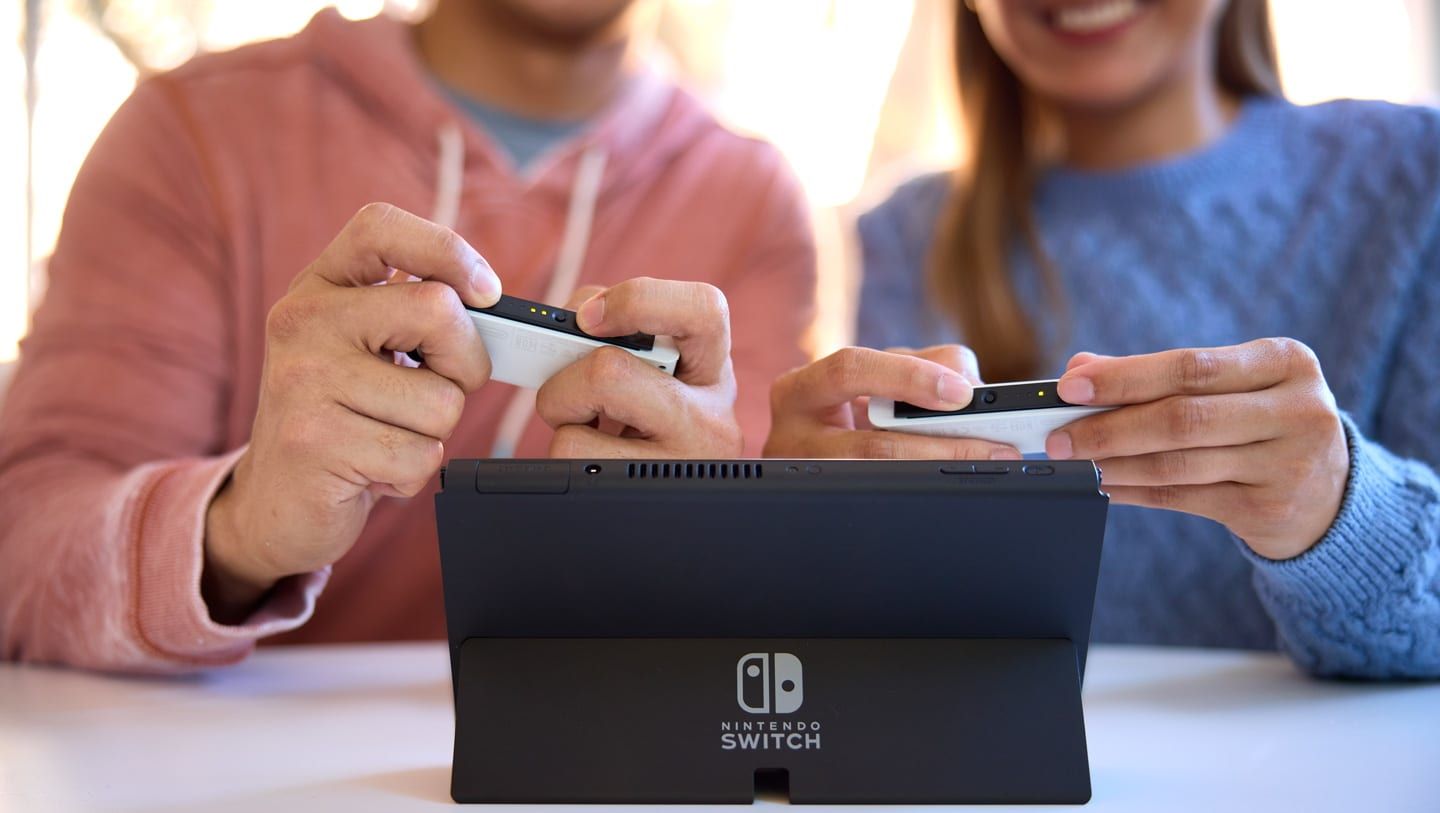
Both devices are versatile in unique ways. However, if we had to pick a winner here, it's the Steam Deck. While the Linux-based SteamOS may not be everyone's cup of tea for regular PC use, Valve doesn't limit you to its software. You can even install a third-party operating system like Windows on it.
The Nintendo Switch (OLED) Model doesn't give you this level of flexibility, but it has some tricks up its sleeves. For instance, you can detach the Joy-Cons from the Nintendo Switch and use them as separate controllers for a unique local multiplayer experience. To do the same on the Steam Deck, you'll need to connect an external controller.
The Switch also comes with a dock that you can use to hook it up to your TV for big-screen gaming. However, with the Steam Deck, you'll have to purchase that separately.
Related: The Xbox Game Pass vs. The Xbox Game Pass Ultimate: Is it Worth Upgrading?
5. Steam Deck vs. Nintendo Switch (OLED) Model: Storage
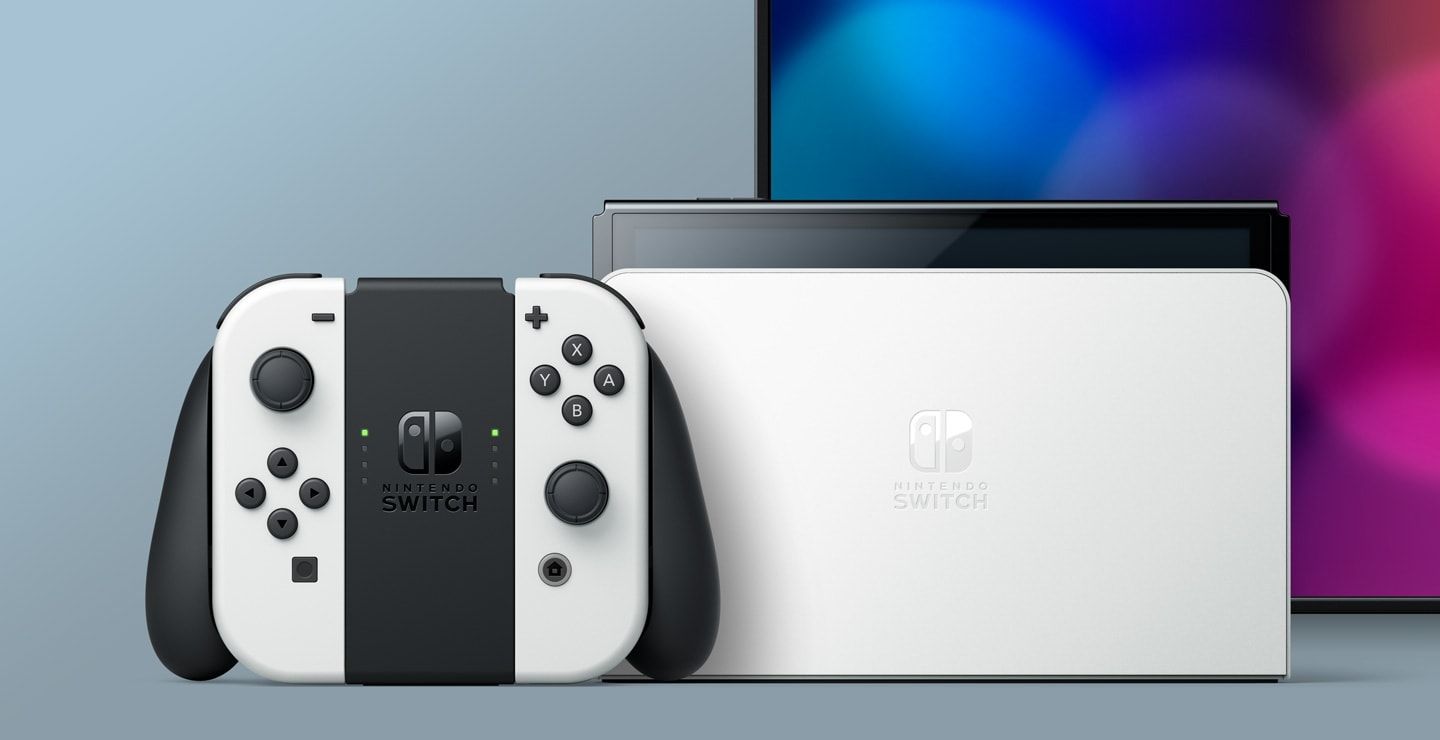
The new Nintendo Switch (OLED) Model packs 64 GB of eMMC storage---twice as much as the original Switch and Switch Lite models. On the other hand, the Steam Deck comes in three storage variants, with the base model packing 64 GB of eMMC storage just like the upgraded Switch.
For Nintendo, 64 GB may be adequate, but it's just not good enough for the Steam Deck. That's because Nintendo Switch games aren't large, with first-party titles averaging 5-15 GB. You can also play games directly from the Switch cartridge, which you can't do on the Steam Deck. But PC games are massive these days, and some popular titles require at least 50 GB of storage space.
Hence, most PC gamers would be better off with the 256 GB and 512 GB Steam Deck variants. These models also pack NVMe SSDs, which are much faster than the base model's eMMC storage.
That said, both the Steam Deck and the Nintendo Switch OLED support expandable storage up to 1 TB via a microSD card expansion slot.
Related: The Fastest and Best microSD Cards
6. Steam Deck vs. Nintendo Switch (OLED): Battery Life
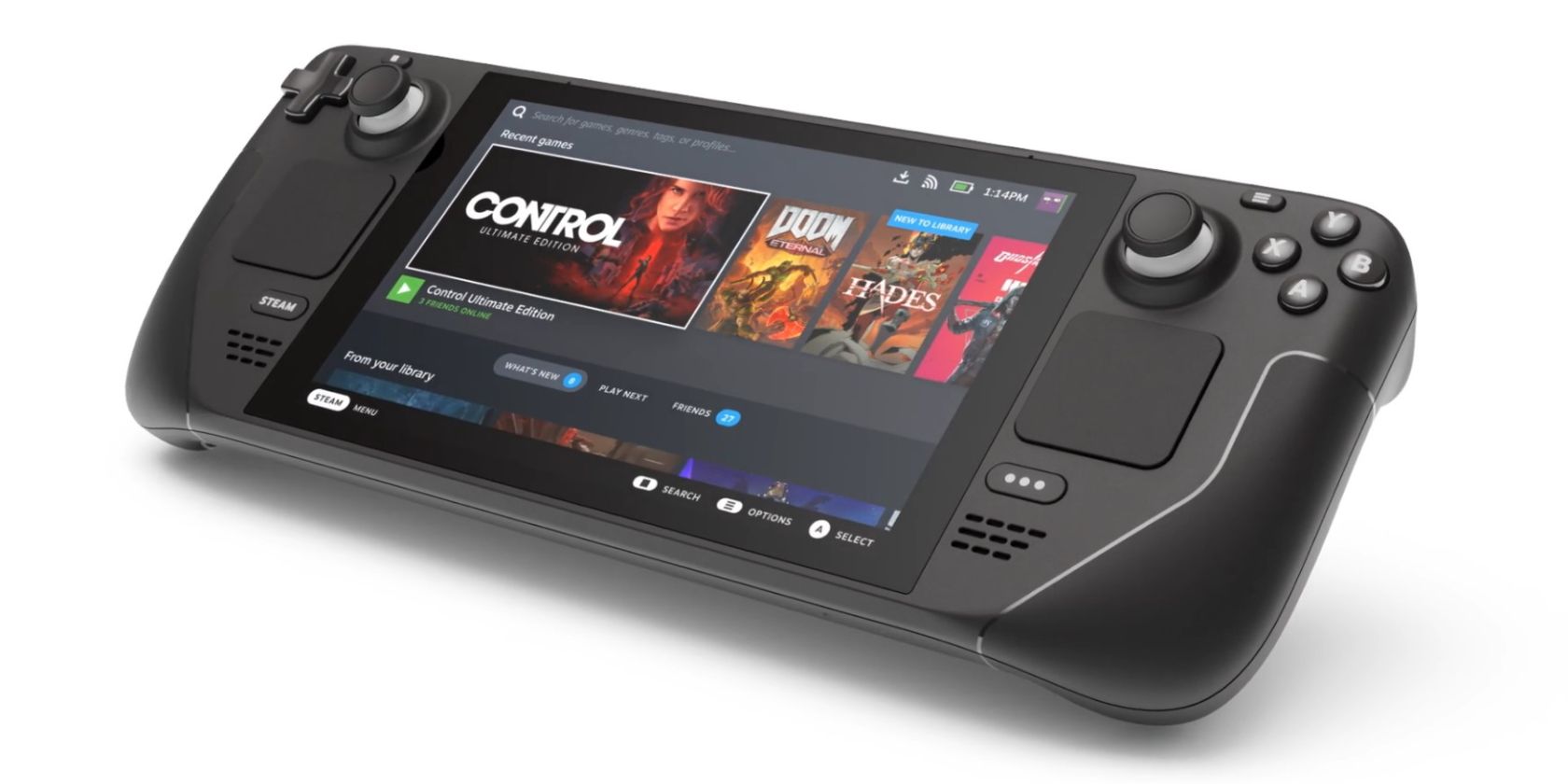
Both devices could have done better in the battery department. The Nintendo Switch (OLED) delivers the same battery life as the regular Switch (2019 revision). Depending on the game, you'll get between 4.5 and 9 hours. However, most OLED panels are thinner than LCDs, meaning Nintendo could have potentially installed a larger battery.
The Steam Deck delivers a slightly lower battery performance in comparison. But this decrease is understandable since it's running full-fledged PC games. Depending on the game and graphics settings, you can expect between 2 and 8 hours of battery life.
According to Valve, Portal 2 should run for 4 hours on the Steam Deck. Though, you might squeeze an extra hour or more of the battery by lowering the frame rate to 30 FPS.
7. Steam Deck vs. Nintendo Switch (OLED): Pricing
At the timing of writing the Nintendo Switch (OLED) costs $349.99, a $50 premium over the regular Switch. You get a larger OLED display, twice the storage, and a LAN port for the extra cash.
The Steam Deck has multiple price points. The base 64 GB model currently costs just $399, and the higher-end 256 GB and 512 GB models will set you back at $529 and $649, respectively.
Find the Perfect Handheld for You
Unfortunately, there's no clear winner here. It comes down to what you want from your portable gaming device. If you already have a PC, you'd likely lean towards the Nintendo Switch and its first-party exclusives.
Otherwise, the Steam Deck is an excellent value for everything it brings to the table. With it, you'll get access to an ever-growing library of PC games. Plus, you can turn it into a desktop computer whenever you like.
